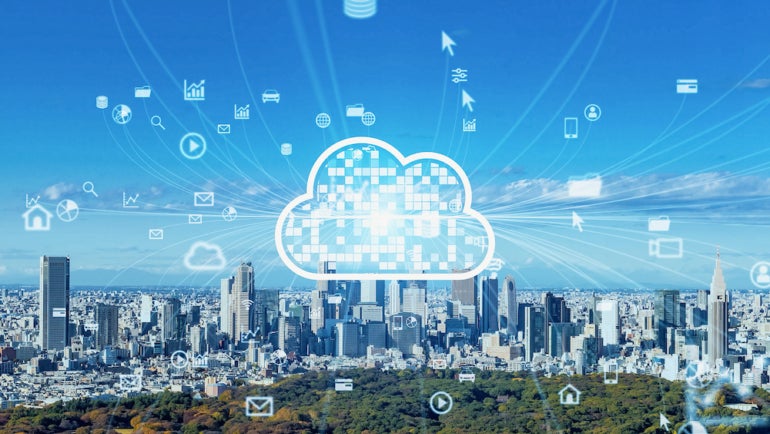
Enterprise infrastructure and operations teams will have to cope with economic and geopolitical pressures as they pivot to support new technologies and ways of working, according to new Gartner research about four trends that will impact cloud, data center and edge infrastructure in 2023.
Gartner VP Analyst Paul Delory believes those external forces, and not IT infrastructure, will be the biggest problems organizations face. Infrastructure and operations teams “will have a vital role to play in ameliorating” their effects, Delory said during Gartner’s recent IT Infrastructure, Operations & Cloud Strategies conference, as quoted in a company press release. This will be a year of “refocusing, retooling, and rethinking” infrastructure, he noted.
Jump to:
Even though the usage of public cloud is pervasive, many deployments are ad hoc and poorly implemented. To make clouds more efficient, resilient and cost-effective, I&O teams should reexamine infrastructure that was hastily assembled or poorly architected.
Refactoring cloud infrastructure should focus on optimizing costs. This can be done through a series of steps that starts with eliminating redundant, overbuilt or unused cloud infrastructure, as well as building business resilience rather than service-level redundancy; using cloud infrastructure as a way to mitigate supply chain disruptions; and modernizing infrastructure.
The work will pay off: According to Gartner, 65% of application workloads will be optimal or ready for cloud delivery by 2027, up from 45% in 2022.
New and growing demands from new types of infrastructure — including edge infrastructure for data-intensive use cases, non-x86 architectures for specialized workloads, serverless edge architectures and 5G mobile service — continually challenge I&O teams. Gartner predicts 15% of on-premises production workloads will run in containers by 2026, up from less than 5% in 2022.
To prepare, I&O professionals must evaluate alternative options with care, focusing on their ability to manage, integrate and transform in the face of constraints on time, talent and resources. “Don’t revert to traditional methods or solutions just because they’ve worked well in the past,” Delory advised, as quoted in the press release. “Challenging periods are times to innovate and find new solutions to meet business demands.”
Data centers are declining as organizations turn to platform-based co-location providers. Used in tandem with new as-a-service models for physical infrastructure can mimic cloud-like services with economic benefits in on-premises infrastructure.
According to Gartner, 35% of data center infrastructure will be managed from a cloud-based control plane by 2027, up from less than 10% in 2022. Three steps I&O professionals should focus on this year:
In an interview with TechRepublic, Delory said consumption-b
ased pricing in the data center is becoming increasingly popular. “This allows you to pay for hardware on an ongoing, monthly basis. It brings the economic model closer to that of cloud, and it means you don’t have to write a big check upfront for all your equipment.”
All the major hardware vendors have consumption-based pricing programs now, and they encourage you to use them, he added.
The biggest barrier to infrastructure modernization efforts is a lack of skills and any organizations finding they cannot hire outside talent to fill skills gaps. Unless IT organizations prioritize organic skill growth, they will not succeed, the firm cautions.
Operations skill growth must be I&O leaders’ highest priority this year, Gartner said.
Further, they should encourage I&O professionals to take on new roles as site reliability engineers or subject matter expert consultants for developer teams and business units. Gartner predicts 60% of data center infrastructure teams will have relevant automation and cloud skills by 2027, up from 30% in 2022.
There are other steps IT organizations should take from a strategic and cost perspective, Delory said. Observing that tech buying power has largely shifted to business units and that “IT is no longer the technology vending machine,” he said the job of I&O teams is to work with technology buyers to help them make the right infrastructure decisions.
“We are transitioning to be almost internal consultants who help non-technical business buyers make good technology decisions,” he said.
In terms of cost controls, in the cloud, applications should be refactored to use cloud-native principles such as migrating to serverless or serverless container architectures rather than using virtual machines, he recommended.
“This is how you get the maximum value out of cloud infrastructure and pay down your technical debt,” Delory said.
He expressed pessimism about the supply chain outlook, saying that disruptions continue to be an ongoing effect of COVID-19 shutdowns. “Some of our data is looking pretty dire.”
For example, Gartner is seeing lead times on network equipment averaging 200 days, and in some cases, clients have reported delays of 400 days.
“That means if you order new network gear today, you might not receive it in 2023,” Delory said. “Many organizations that expected to do network refreshes this year may need to sweat those assets for another year.”
Cloud and consumption-based models are also ways to mitigate supply chain issues, Delory said. In terms of the cloud, capacity management is the cloud vendors’ problem. In a consumption-based model, items are shipped with excess capacity, so you don’t pay for them until you use them.
“A lot of IT shops have grown accustomed to just-in-time ordering because it’s more resource efficient,” Delory said. “But in a time of widespread supply chain disruptions, just-in-time ordering may not work.”